Lost in Random: The Eternal Die is the long-awaited sequel to the acclaimed Lost in Random (2021), developed by Zoink Games and published under the EA Originals label. If the first game was already eccentric and mixed dark narrative and tactical combat, The Eternal Die takes this formula to a new level.
Set in the same dark fantasy universe inspired by Tim Burton, the game puts players in the role of Queen Aleksandra, previously an antagonist, now a child trapped in the fearsome Black Die. Accompanied by the sentient dice Fortune, her mission is to defeat Mare, the Knight, the entity that controls this hellish dimension.
In this spin-off, the developers abandoned the third-person action-adventure structure of the original title and adopted an isometric roguelite format with a larger world, more refined mechanics, and a heavier emotional punch.
But was the gamble worth it? In this review, we'll look at all the aspects that make this sequel one of the most intriguing titles on the indie scene in 2025.
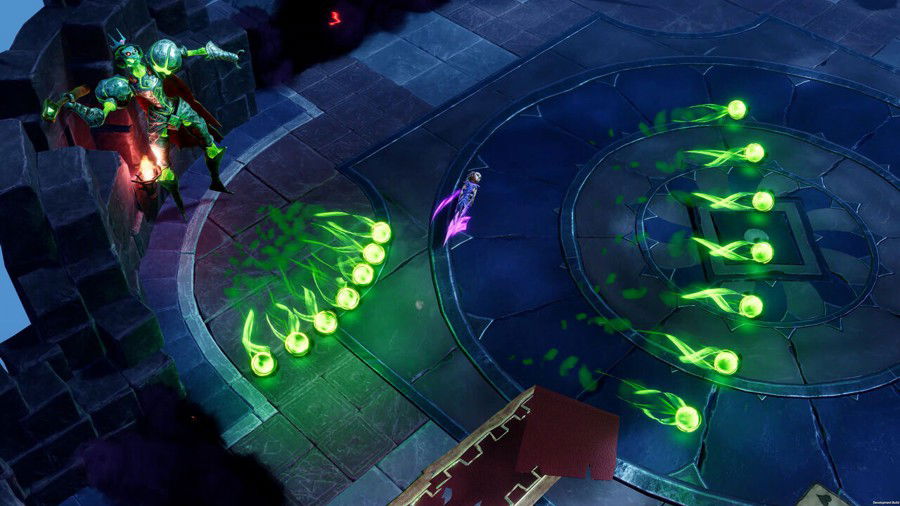
A World Rich with some Waste
The story takes place decades after the events of the original game, where Even and her magical die Dicey challenged the tyranny of the Queen and the oppressive logic of chance. Now, the kingdom of Random finds itself once again on the brink of collapse, not by tyranny, but by total disorder. After the destruction of the Royal Die, the balance of the six regions has been corrupted by a new artifact: the Die, a mysterious and seemingly infinite die that isn‘t content with six sides, but constantly changes, carrying with it arcane powers, alternate realities and fragments of time.
You play as Odda, a young orphan raised in the Ruins of Tres, who finds a fragment of the Die and unwittingly becomes the new bearer of fate. With her own unstable die, nicknamed Zee, she must navigate a world more unstable than ever, where everything has gone mad and the dice no longer roll in anyone's favor.
Narrative and Writing
The writing in The Eternal Die is sharper. The narrative continues the tradition of mixing adult themes with a childlike tone, exploring existential dilemmas such as free will, identity and fear of oblivion. The game is full of sarcastic dialogues, interesting characters and short stories that recall the works of Neil Gaiman and the dark tales of the Grimm Brothers.
Odda is a more introspective protagonist than Even, and this is reflected in the pace of the story. Her story isn’t about overthrowing a regime, but about understanding chaos and finding purpose amidst randomness. Her dice, Zee, unlike Dicey, speaks in fragments of memory, gradually revealing a tragic connection with the ancient Gods of Chance.
The player's choices now have more impact. Depending on the dice rolled and decisions made at crucial moments, the ending changes radically. There are five possible endings, all consistent with the central themes of the game.
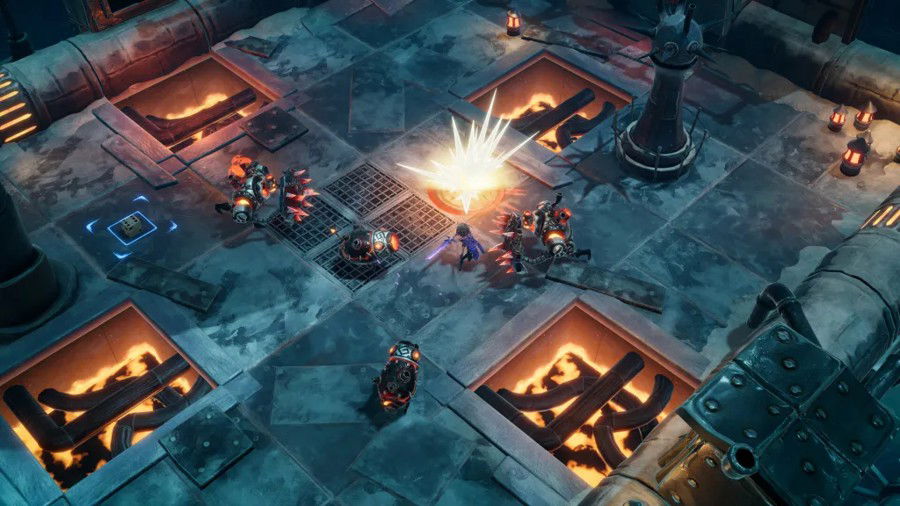
Structural Issues
While the story is interesting, the game's biggest disappointment lies in its narrative itself. While the original title was acclaimed for its immersive story and fascinating characters, The Eternal Die treats the plot as mere background:
- The intro summarizes crucial events such as the death of Aleksandra's sister and her fall into the Black Die in 30 seconds, without any context. For new players, it's like walking into the middle of an already ongoing movie.
- Progression unlocks "memory rooms" with short dialogues, but they don't delve into the lore or the protagonist's motives. Memorable characters from the first game appear briefly, but serve only as disconnected "cameo" appearances.
- The outcome varies depending on the rescue of NPCs, but the choices need to have dramatic weight. The transformation of the Black Die into the "Eternal Die" is symbolic, but has little impact.
Dependence on the Original
The game assumes that the player is familiar with Lost in Random. Without this background, Aleksandra's journey loses much of its meaning. Mare, the villain, is presented as "an evil knight" with no clear motivations, which wastes the moral complexity that exists.
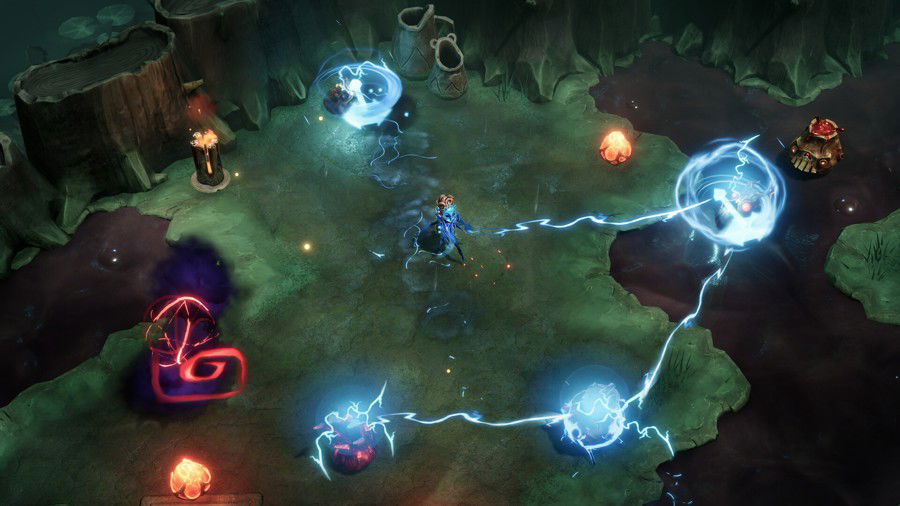
Ambientation and Visual Style
Like its predecessor, The Eternal Die maintains the gothic and surreal aesthetic that’s already the trademark of the franchise. Visually, the game shows its love for films like Coraline, The Nightmare Before Christmas and 9 – Salvation. The character designs mix the grotesque and the charming, with rag dolls, mechanical creatures, card soldiers and new threats that seem to have come straight out of childhood nightmares.
Each region of the Kingdom of Random has its own visual identity, but now the areas are more developed. Uno, for example, is a broken city where everything is decided by a coin toss, while Five is frozen in time, with citizens trapped in time loops. The new area called Zero is a non-place, where rules don’t apply and reality constantly bends.
The art direction is, with no exaggeration, brilliant. The shadowy lighting, the melancholic soundtrack, the unsettling sound effects and the attention to details create a very immersive, almost theatrical experience that hypnotizes the player from the first minutes.
Gameplay Where the Dice Roll Towards Innovation
If there's one area where The Eternal Die has really evolved, it's in the gameplay. The first game already featured a unique combat system: real-time action paused by dice rolls that unlocked cards with temporary weapons and abilities. In this sequel, the game expands on this in a brilliant way.
Now, Zee can have up to 12 sides, unlocked as you progress through the campaign. Each unlocked side can contain elemental runes, cursed effects, or blessings. The cards, in turn, are more diverse and combinable, allowing the construction of complex and customized decks.
Combat is more fluid, with enemies that require more thought. Some battles take place in arenas where the scenery changes with each roll of the dice, with signs falling, platforms disappearing, and enemies being randomly rearranged. The unpredictability is part of what draws attention, and you can now slightly manipulate the results with dice-twisting abilities, offering an interesting balance between luck and strategy.
The skill tree has also been expanded. Odda can learn techniques related to time manipulation, duplication of effects, or even summoning entities made of pure randomness. Each weapon can be charged for special attacks and customized with permanent upgrades in the Sanctuary (the hub between games).
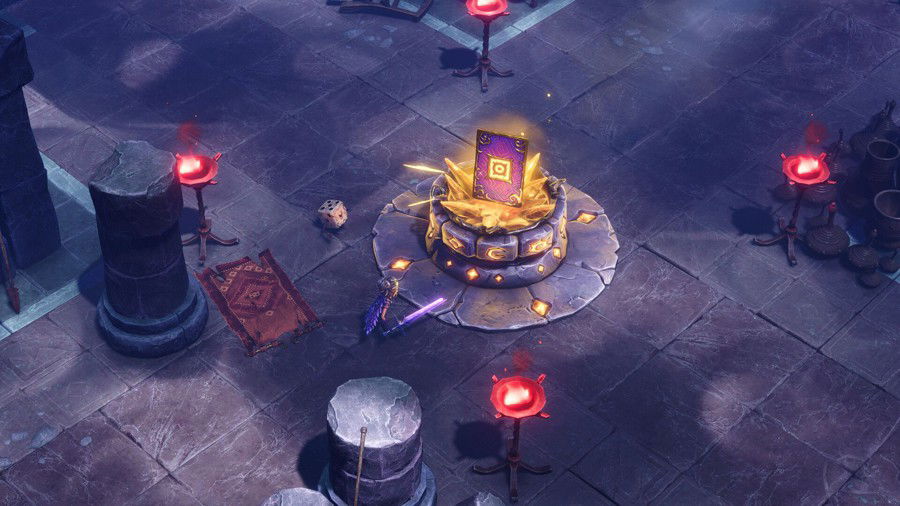
Semi-Open World and Exploration
While the first game was more linear, The Eternal Die adopts a semi-open format, with interconnected zones that can be revisited with new abilities. Each region hides secrets, side quests and mini-stories that make the game's universe more interesting and richer in detail. There are missions that involve logic puzzles, dimensional mazes and even card battles.
Exploring the game rewards the player with gameplay improvements and narrative fragments: ancient letters, data logs and echoes of the first users of Die. The game values curiosity and attention to detail.
Well-Balanced Roguelite Progression
Death isn’t the end, but an opportunity for evolution:
- Meta-Upgrades: Two currencies (one for queen upgrades, one for weapons) allow you to unlock passive skills ("Blessings") and equipment improvements.
- Procedural Generation: The four biomes (such as foggy swamps and gothic fortresses) feature randomized rooms, combats, shops, healing fountains or games of chance with rewards.
Technical Data and Performance
At launch, The Eternal Die performed solidly, especially on next-gen consoles and PC. The game runs at a consistent 60fps on PS5 and Xbox Series, with virtually no loading times thanks to efficient use of the SSD, but the Switch version suffers from texture pop-in.
There’s support for real-time ray tracing and accessibility options that range from text color and size adjustments to a “narrative difficulty” focused exclusively on the story.
Despite this, minor visual glitches can occur, such as occasional clipping, collision bugs, and occasional crashes during quick region switches. It's nothing that seriously compromises the experience, but the Zoink team has already promised corrective patches.
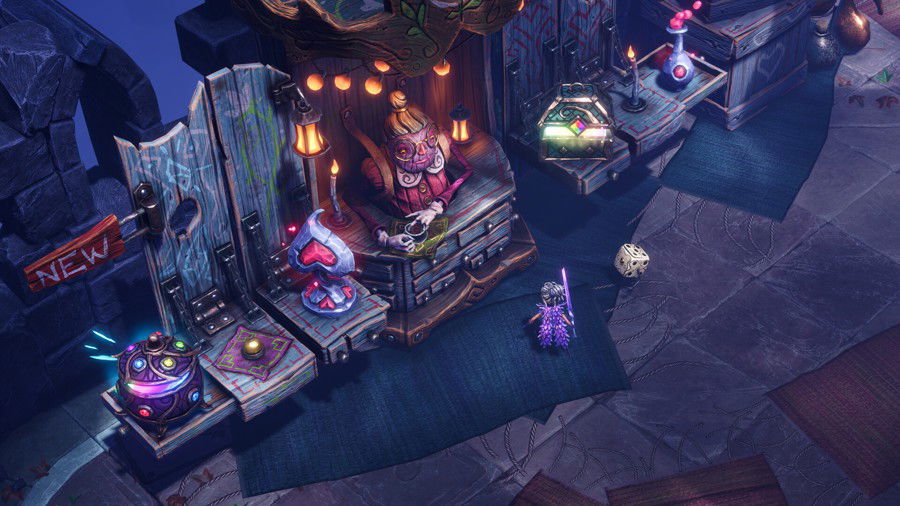
Pros and Cons
Pros
- Length: The game takes about 15 hours, but unlocking the alternate endings and maxing out the upgrades will extend the campaign to 25+ hours.
- Difficulty Modes: Adjustable options (e.g. +enemy damage vs. +player health) allow you to customize the challenge.
- Roguelite Fans: Combat is comparable to Hades in fluidity, but with less narrative depth.
- First Game Lovers: Despite the plot flaws, revisiting Random is a nostalgic experience.
- Genre Newbies: The accessible difficulty curve and generous meta-progression are ideal for beginners.
Cons
- Narrative: If you prioritize narrative over gameplay or are unfamiliar with the original, the game is worth more for the gameplay.
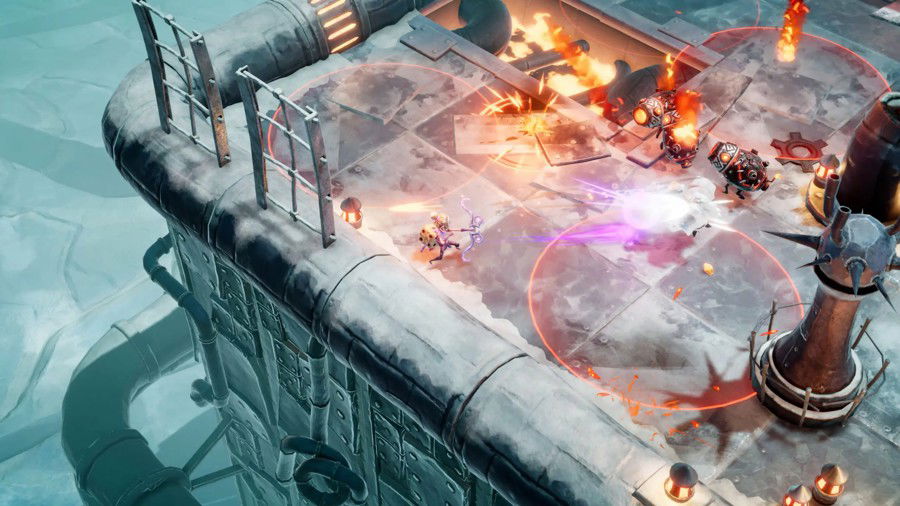
Conclusion
Lost in Random: The Eternal Die is a great sequel. It improves on almost everything its predecessor proposed, and dares to explore deeper themes, offering more freedom to the player and creating a more fascinating world. It’s a game that challenges the notion of control, where each roll of the dice carries real consequences, sometimes tragic, sometimes comical, but always meaningful.
As a roguelite, it shines with tactical combat, a very satisfying progression and an innovative dice system. The art is stunning and the soundtrack elevates the game. Odda and Zee not only take us on a visually admirable adventure, but also make us reflect on the ironies of chance, the value of choice and the price of order in a world where everything can change with a twist.
However, the narrative is a missed opportunity. The decision to reduce the original's rich lore to disjointed fragments will disappoint old and new fans alike. In a world where Hades 2 and Inscryption proved that narrative and roguelites can coexist, the choice in The Eternal Die feels like a step backwards for the genre, even as Random's universe becomes richer, its mythology deeper, and its gameplay more engaging.
If you enjoyed the first Lost in Random, this sequel is a must-play. If you've never played it, The Eternal Die is an excellent entry point, and it's recommended that you play the first one to get the full context.
Lost in Random: The Eternal Die is available on PC, Switch, PS5, and Xbox Series X/S, and is available on Game Pass.









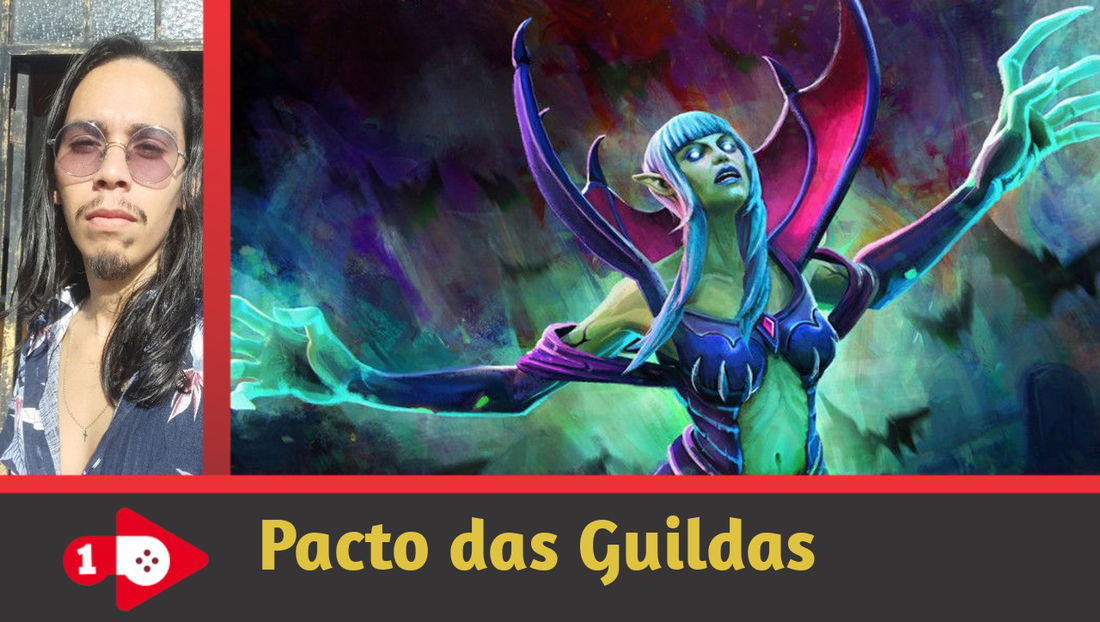
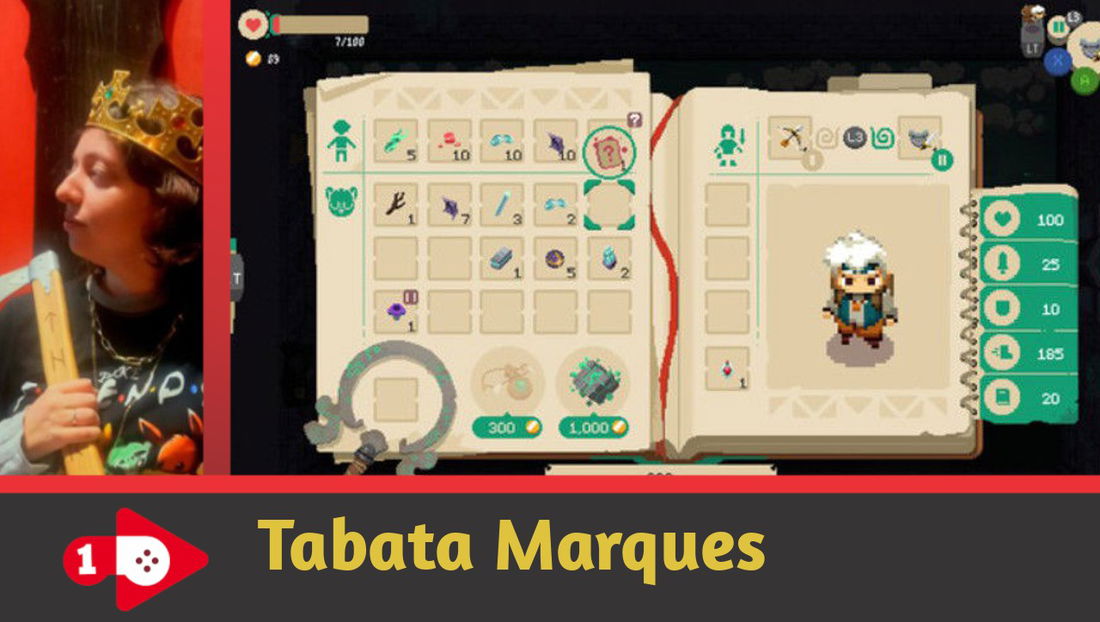



— 评论 0
, 反应 1
成为第一个发表评论的人